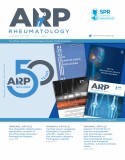The effects of physical exercise on axial spondyloarthritis – a systematic review
Authors
Nuno Pina Gonçalves; Mariana Emília Santos; Manuel Silvério-António; Helena Donato; Fernando M. Pimentel-Santos; Eduardo Cruz;
Keywords
Aim: To collect and summarize the available scientific evidence that evaluates the effects of physical exercise interventions on axial spondyloarthritis (axSpA).
Methods: A systematic review was conducted in accordance to the guidance of Preferred Reporting Items for Systematic review and Meta-Analysis (PRISMA) to collect randomized controlled trials on the PubMed, Embase and Web of Science Core Collection databases. The search strategy included terms regarding physical exercise interventions targeted to axSpA participants and all of its variants in multiple combinations adapted to each one of the databases regarding its own special requirements. Several outcomes were defined: Bath Ankylosing Spondylitis Disease Activity Index (BASDAI), Bath ankylosing spondylitis functional index (BASFI), Bath Ankylosing Spondylitis Metrology Index (BASMI), ASDAS (Ankylosing Spondylitis Disease Activity Score), C-reactive protein (CRP), erythrocyte sedimentation rate (ESR), the 36-item short form health survey (SF-36) and the Ankylosing Spondylitis Quality of Life questionnaire (ASQoL). Two independent researchers screened the titles and abstracts followed by full-text analysis when suitable, using EndnoteTM online. Selected articles, according to exclusion/inclusion criteria defined, were submitted to data extraction and bias assessment was performed for each study’s outcomes using the Cochrane risk-of-bias tool for randomized trials.
Results: A total of 2063 articles were identified through the electronic databases search. After removal of duplicates, 1435 were eligible for screening, of which 45 articles went through full text evaluation. Only 24 articles met the inclusion/exclusion criteria. Physical exercise contributes for a statistically significant improvement of BASDAI in 13 studies, BASFI in 10, BASMI in 6, ASDAS in 3, CRP in 2, ESR in 1, SF-36 in 2 and ASQoL in 3.No major adverse effects were reported and an overall benefit was noted with the implementation of physical exercise as a treatment modality for axSpA.
Conclusion: Physical exercise seems to be an effective non-pharmacological therapy for axSpA, with positive effects in disease activity, physical function, and quality of life.
Nuno Pina Gonçalves
Serviço de Reumatologia, Hospital Central do Funchal, Funchal, Portugal
Mariana Emília Santos
Serviço de Reumatologia, Centro Hospitalar Lisboa Ocidental, Hospital de Egas Moniz, Lisboa, Portugal
Manuel Silvério-António
Serviço de Reumatologia, Centro Hospitalar Lisboa Norte, Centro Académico de Medicina de Lisboa, Lisboa, Portugal
Helena Donato
Serviço de Documentação e Informação Científica, Centro Hospitalar e Universitário de Coimbra, Coimbra, Portugal
Fernando M. Pimentel-Santos
Serviço de Reumatologia, Centro Hospitalar Lisboa Ocidental, Hospital de Egas Moniz, Lisboa, Portugal
Eduardo Cruz
Departamento Fisioterapia, Escola Superior de Saúde de Setúbal, Instituto Politécnico de Setúbal, Setúbal, Portugal
Serviço de Reumatologia, Hospital Central do Funchal, Funchal, Portugal
Mariana Emília Santos
Serviço de Reumatologia, Centro Hospitalar Lisboa Ocidental, Hospital de Egas Moniz, Lisboa, Portugal
Manuel Silvério-António
Serviço de Reumatologia, Centro Hospitalar Lisboa Norte, Centro Académico de Medicina de Lisboa, Lisboa, Portugal
Helena Donato
Serviço de Documentação e Informação Científica, Centro Hospitalar e Universitário de Coimbra, Coimbra, Portugal
Fernando M. Pimentel-Santos
Serviço de Reumatologia, Centro Hospitalar Lisboa Ocidental, Hospital de Egas Moniz, Lisboa, Portugal
Eduardo Cruz
Departamento Fisioterapia, Escola Superior de Saúde de Setúbal, Instituto Politécnico de Setúbal, Setúbal, Portugal





